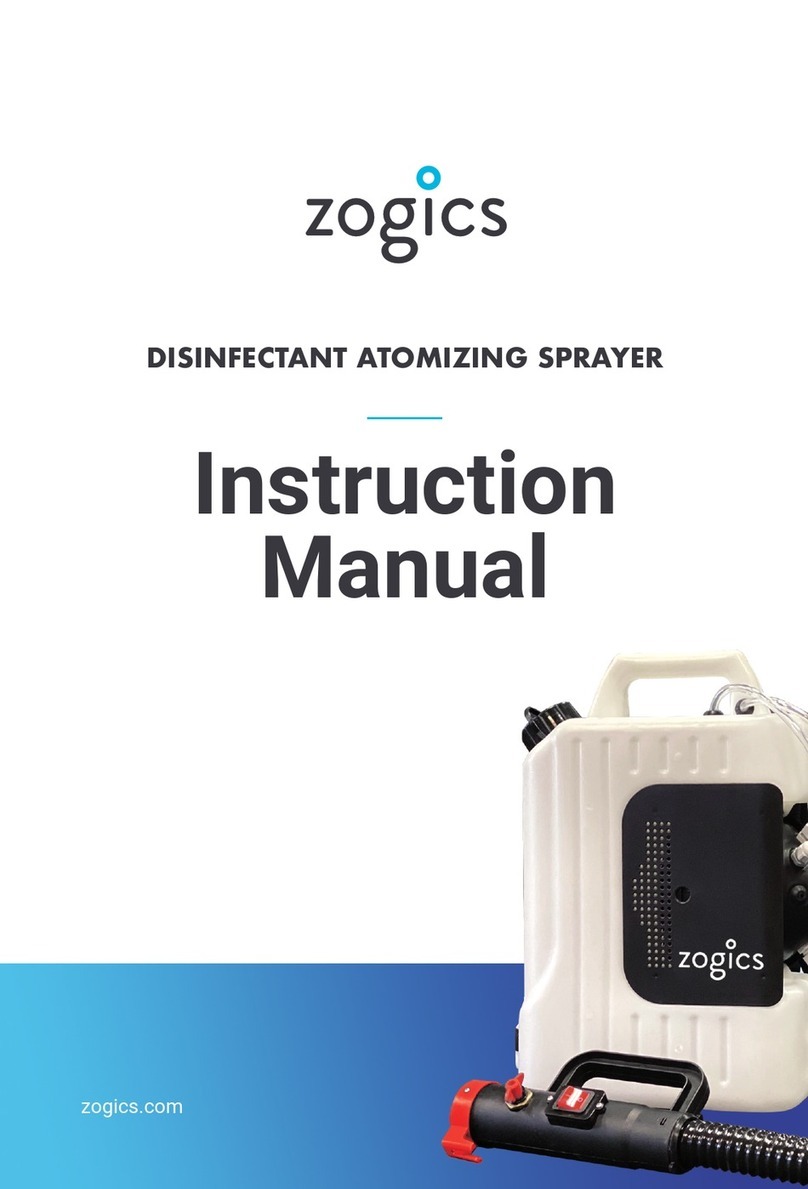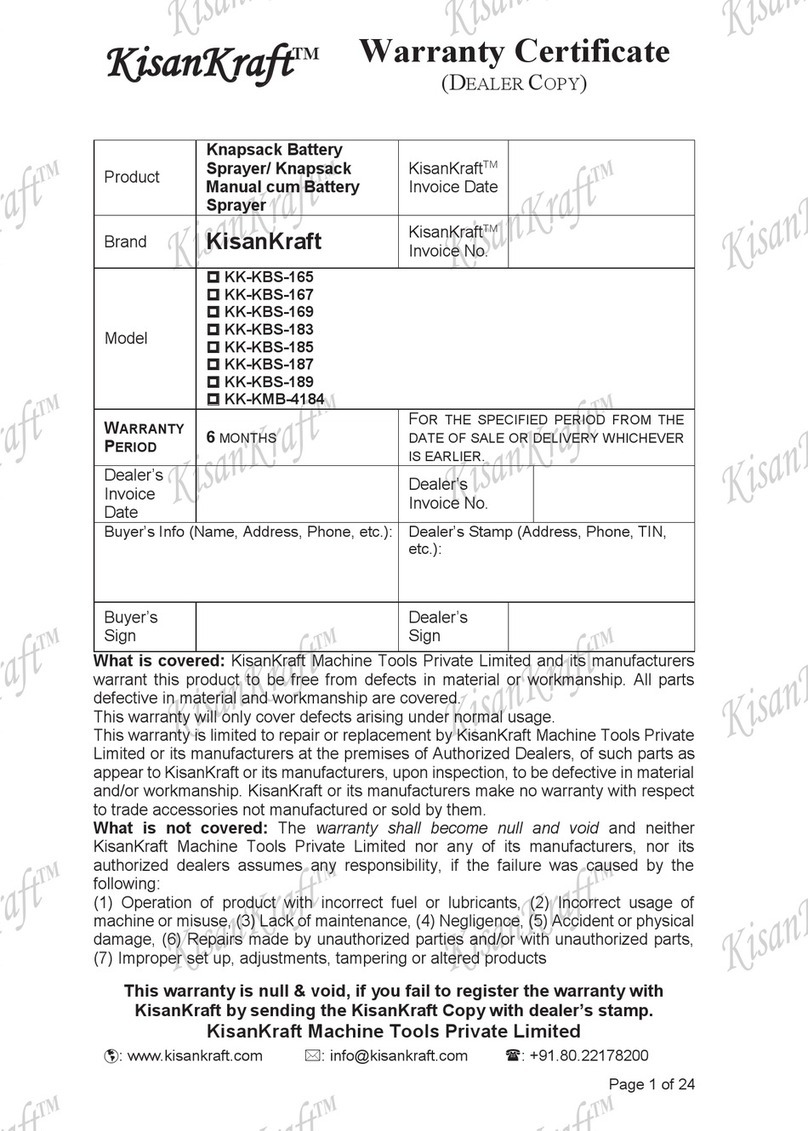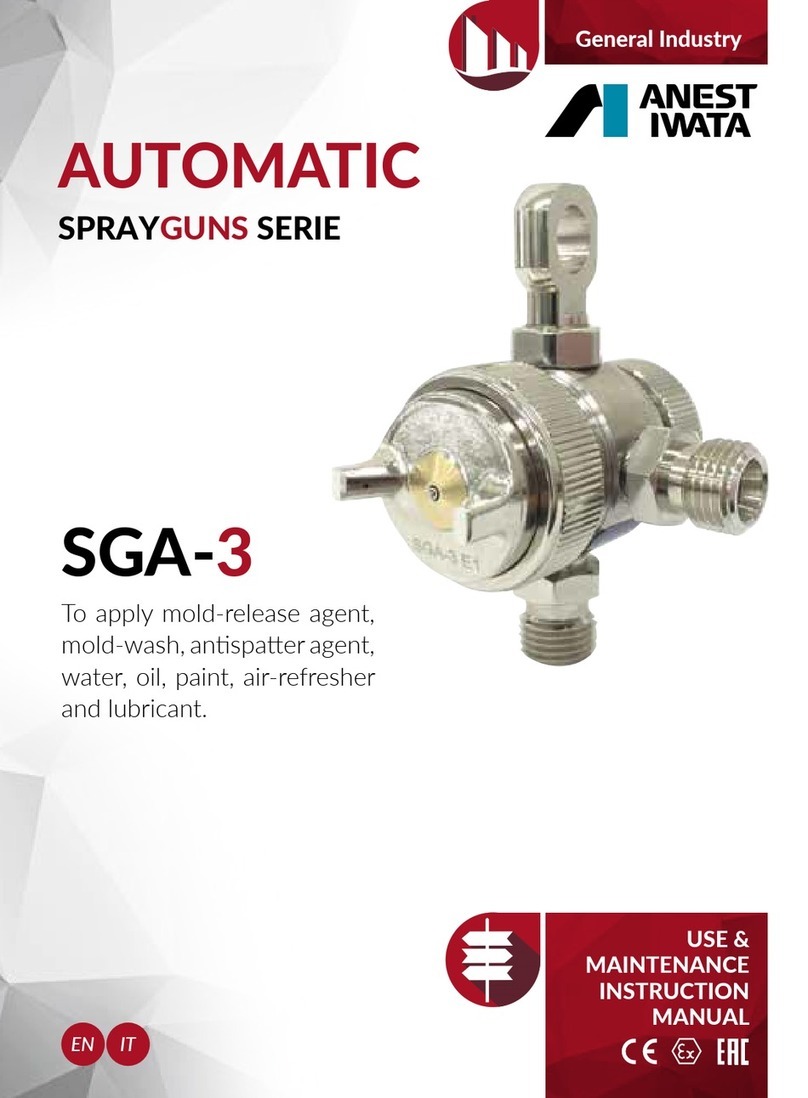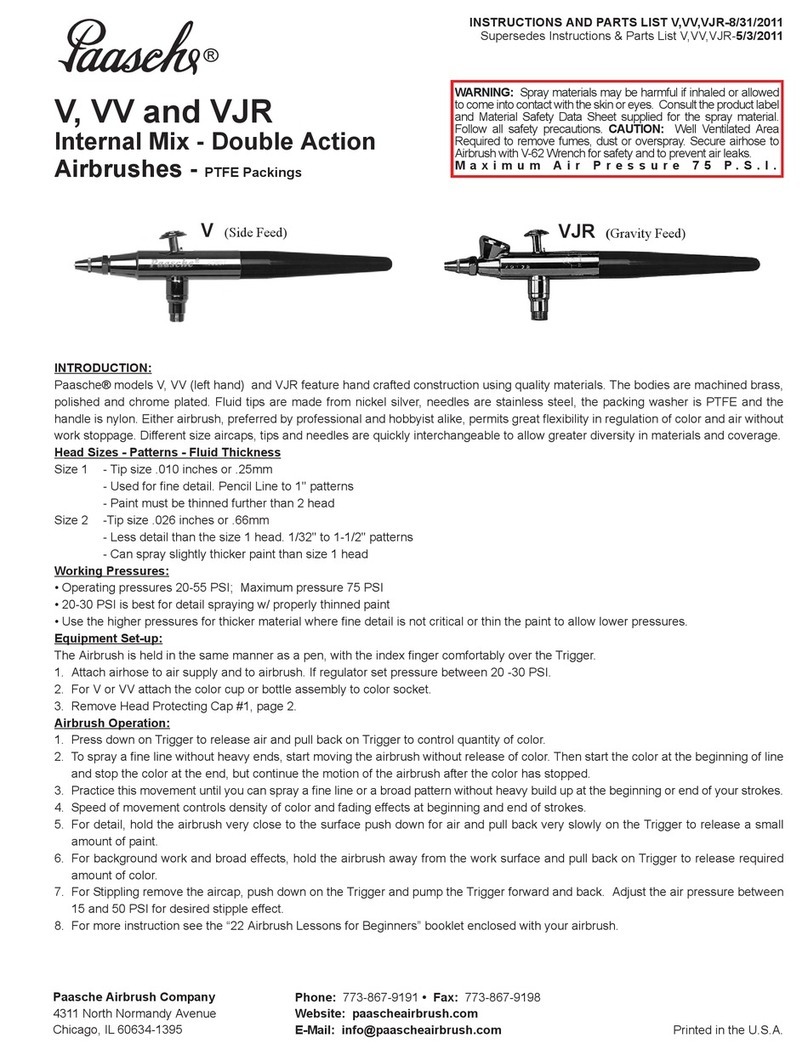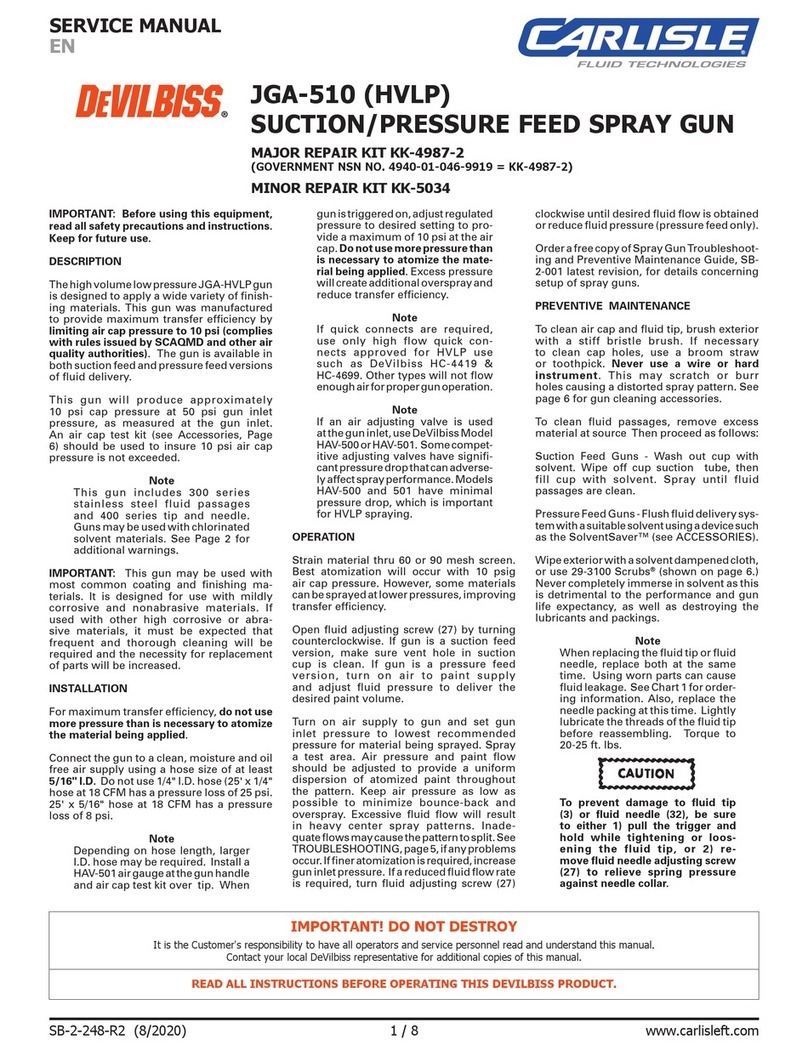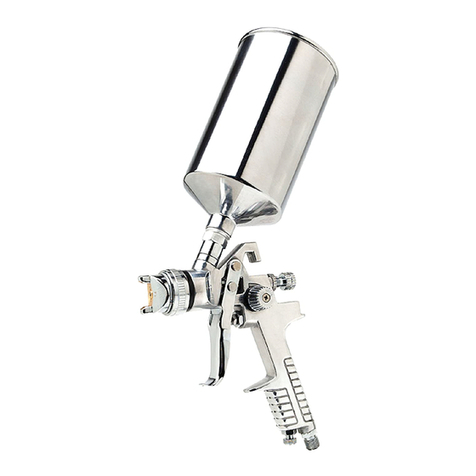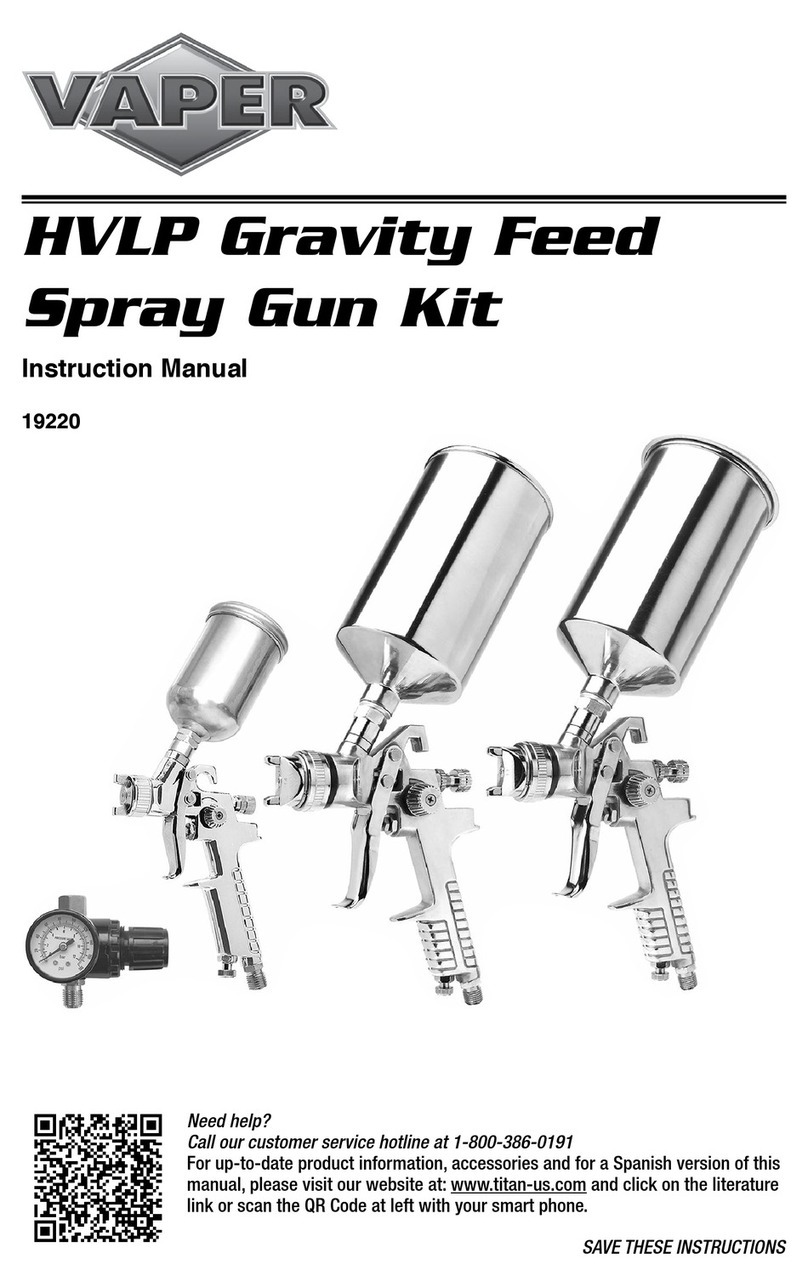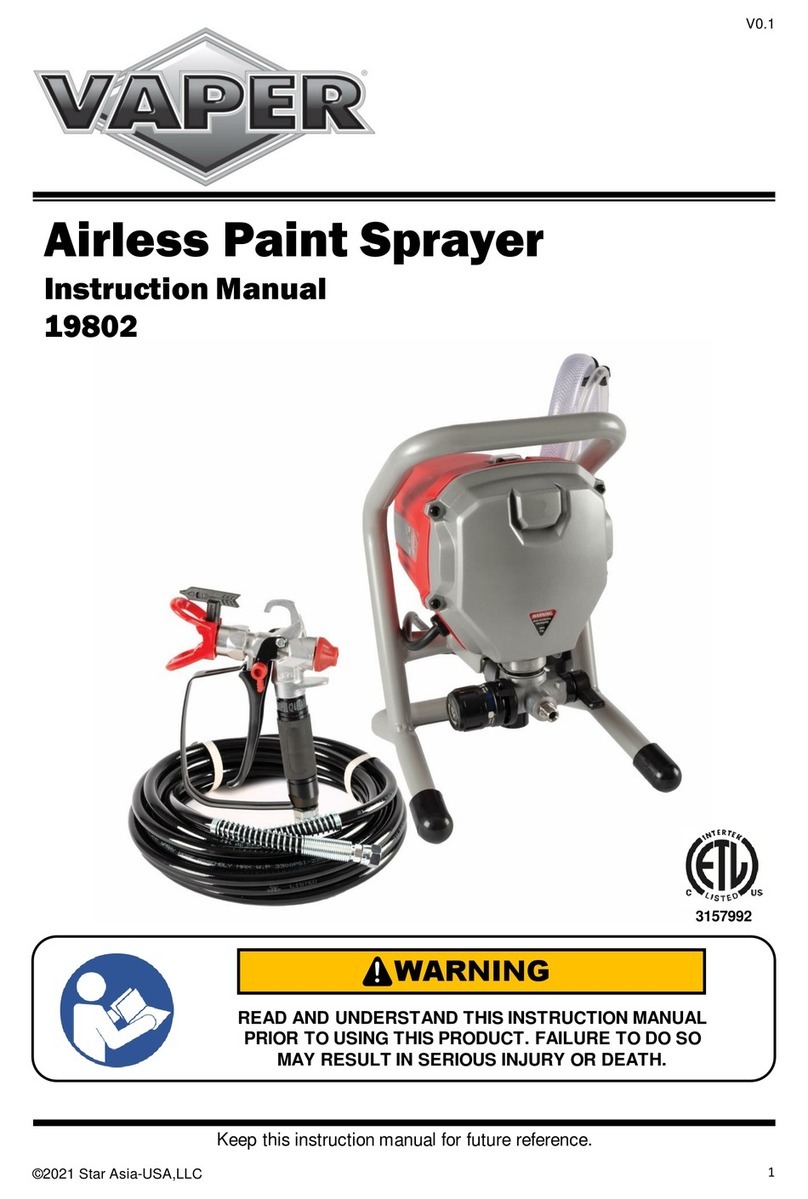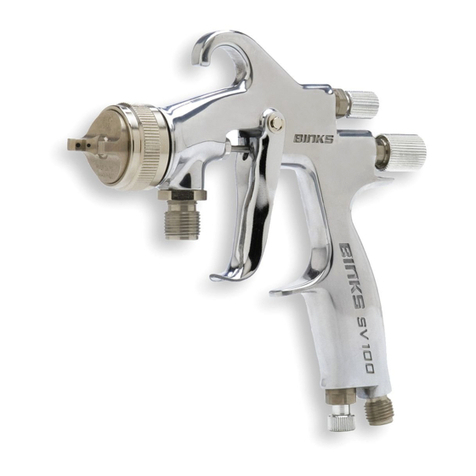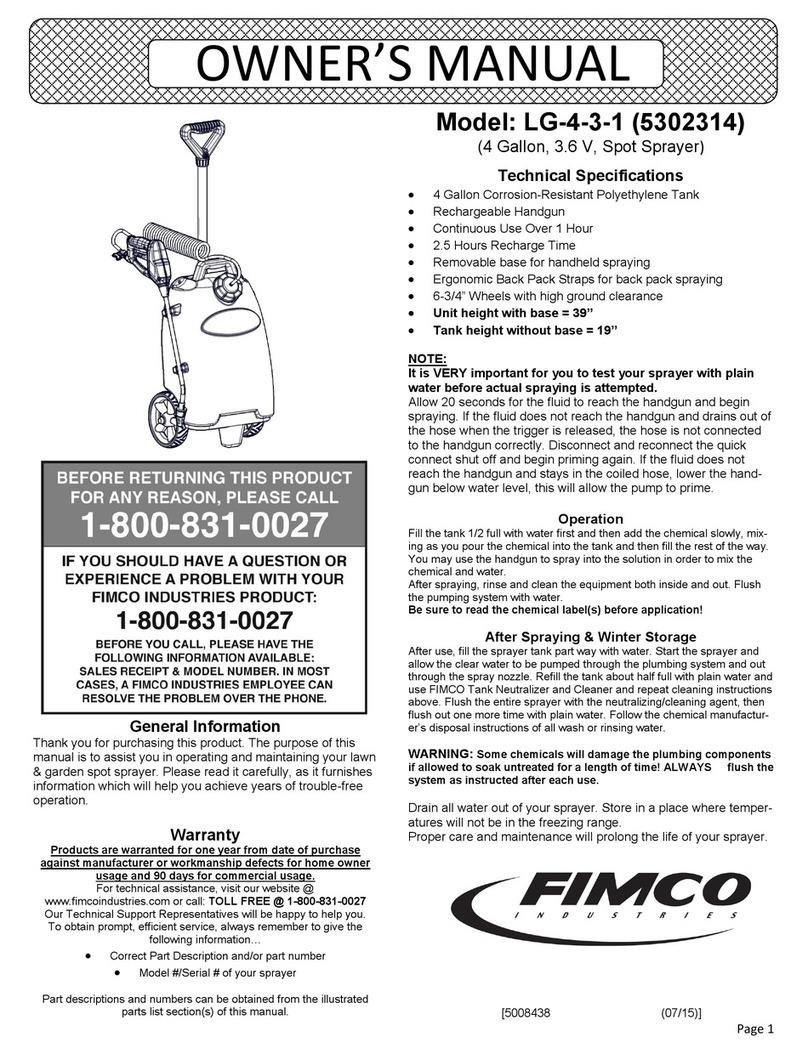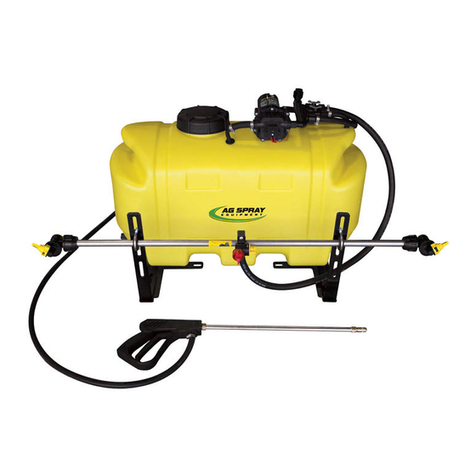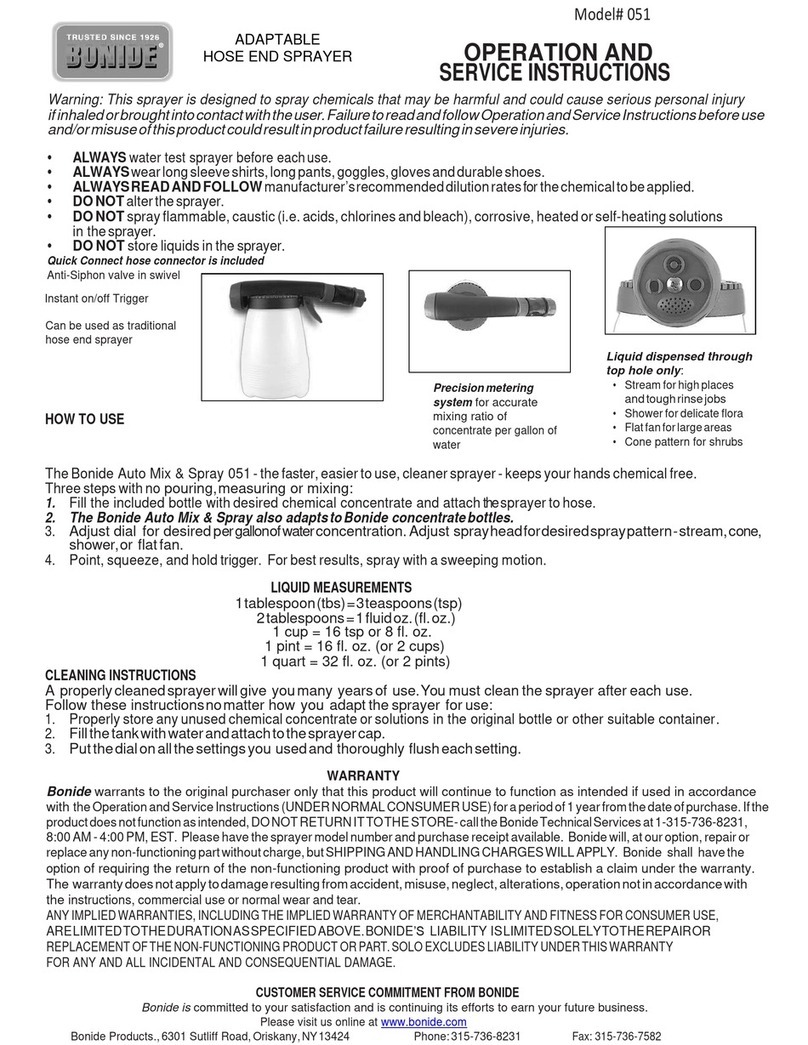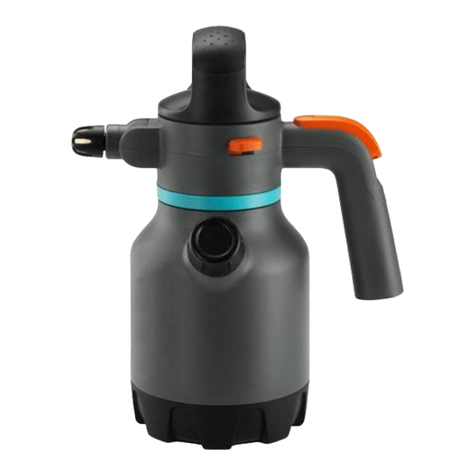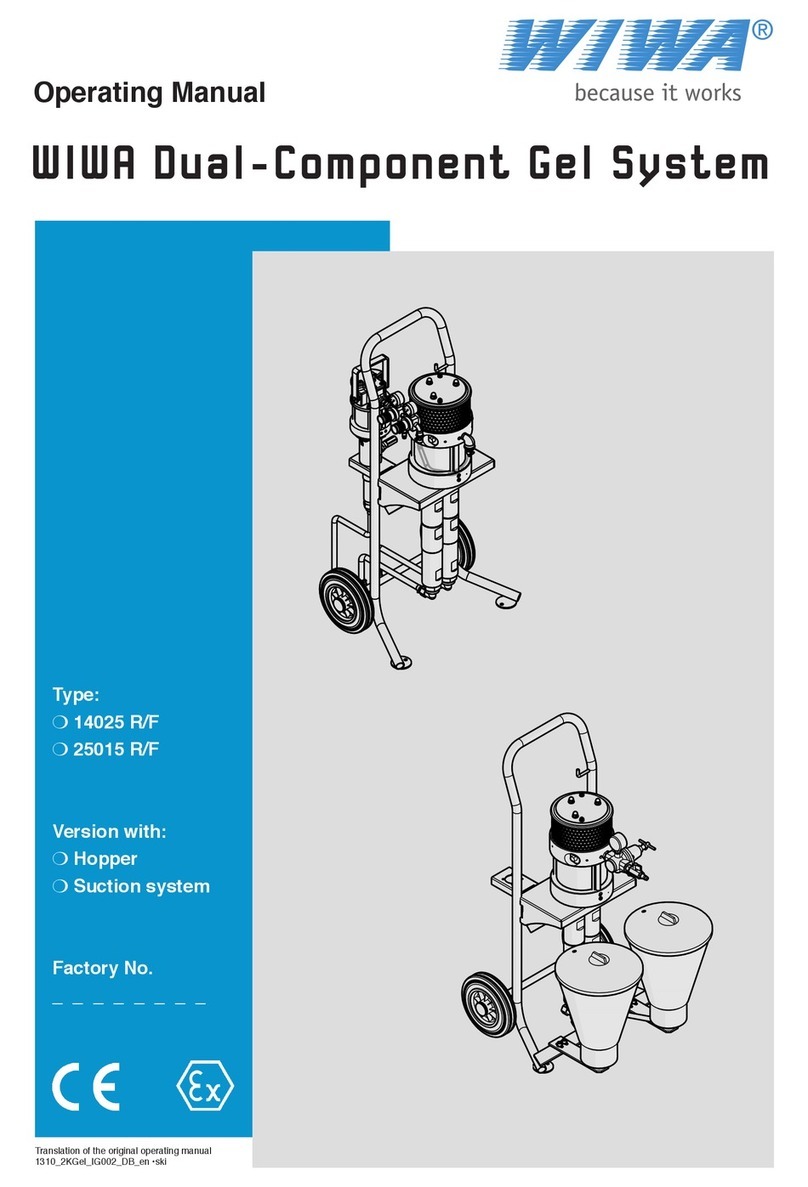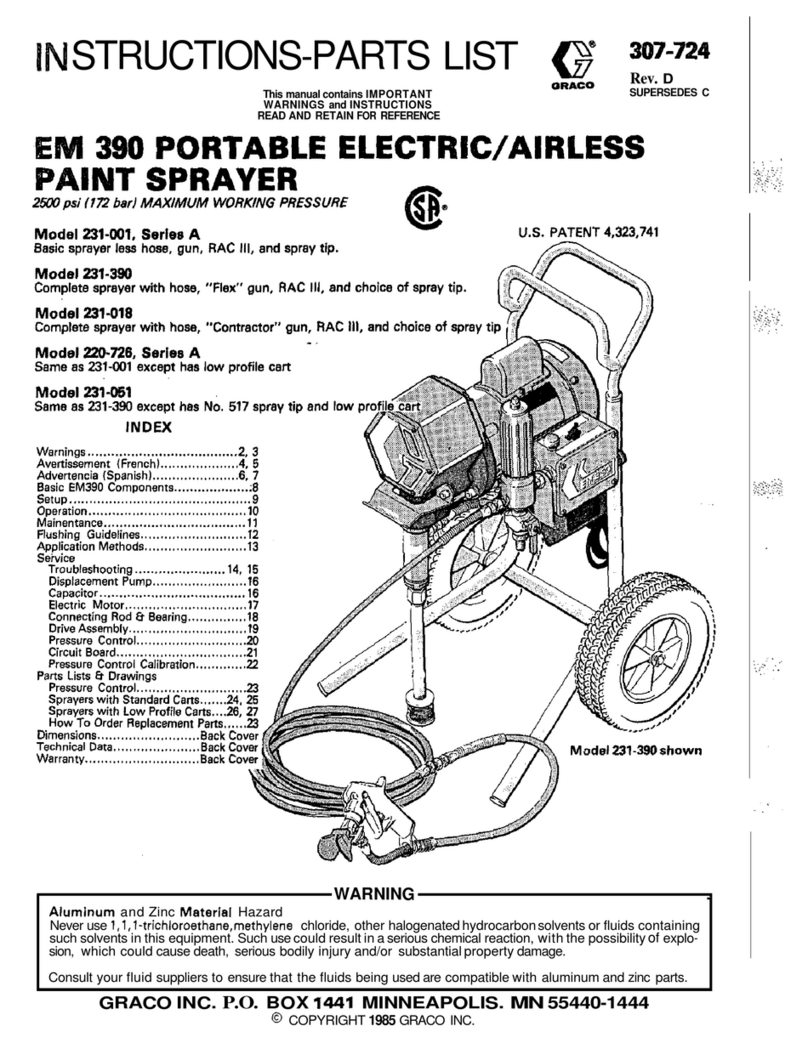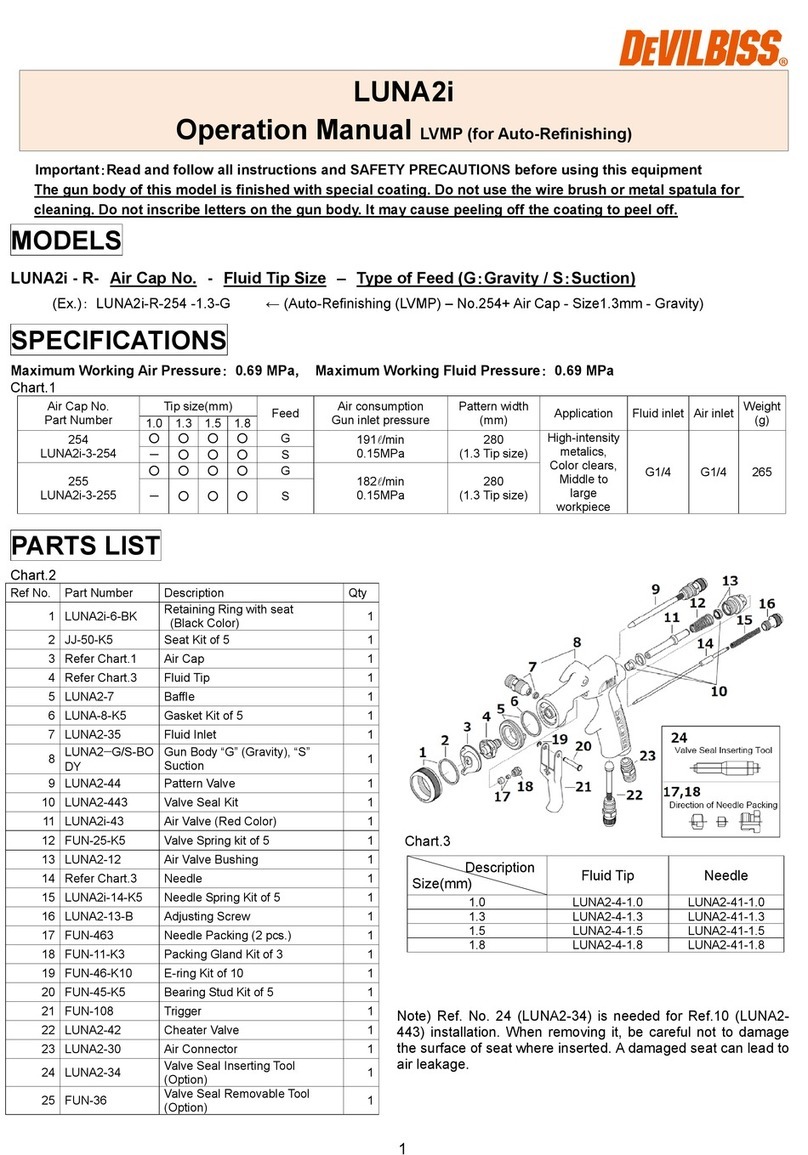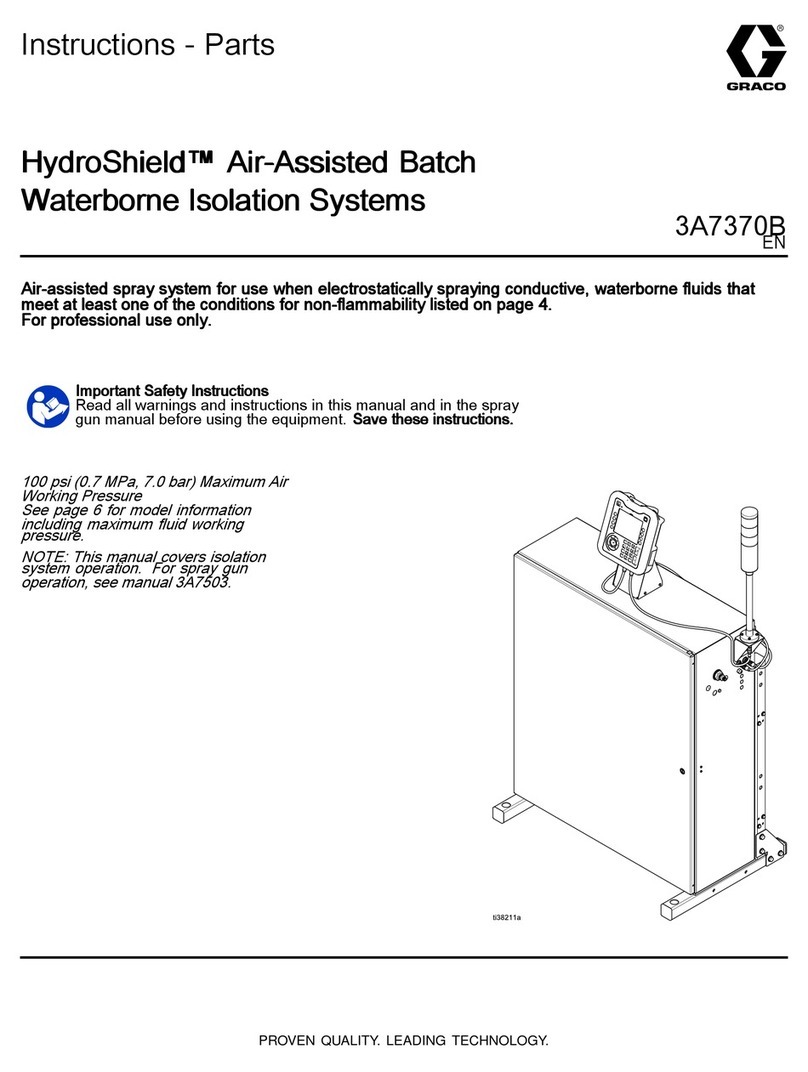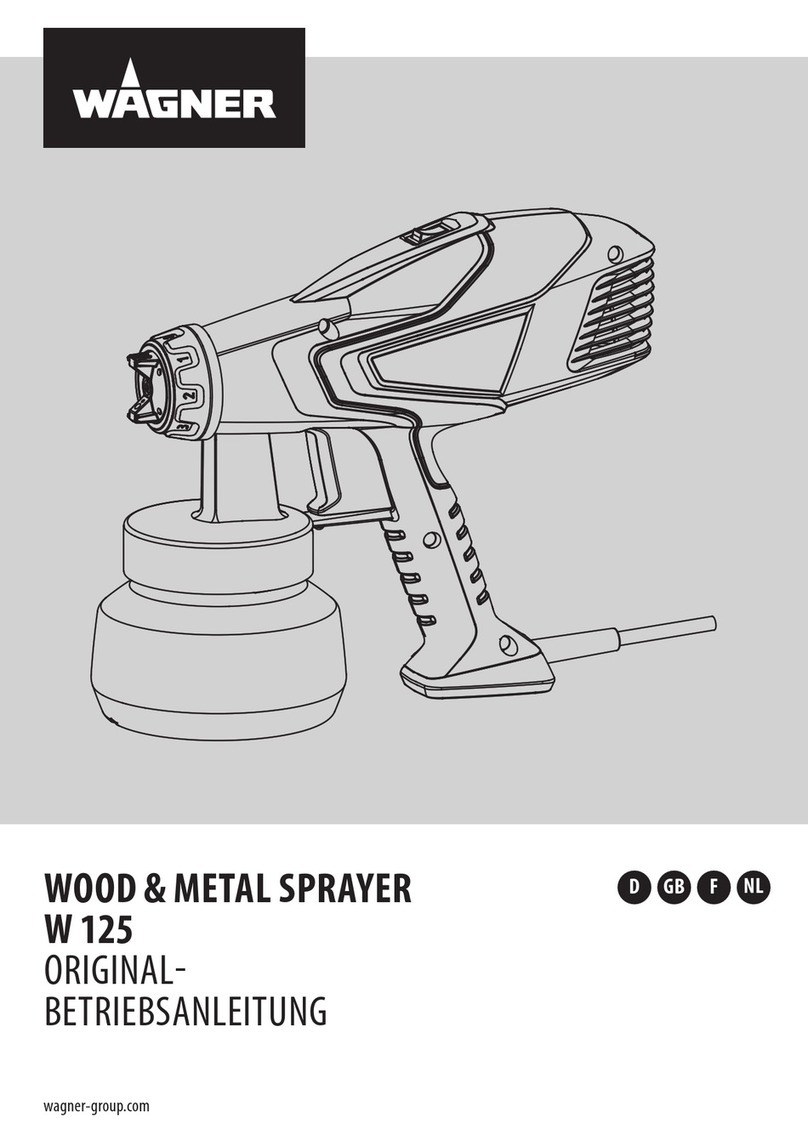
IMPORTANT SAFETY RULES FOR ALL SPRAY GUNS
Read and understand all instructions. Failure to follow all instructions
included with this product could result in serious personal injury and/or
property damage.
Follow all local electrical and safety codes as well as in the United States, the National Electrical
Codes (NEC) and the Occupational Safety and Health Act (OSHA).
The following hazards can occur during the normal use of
this product:
IMPORTANT SAFETY RULES FOR ALL SPRAY GUNS
HAZARD
Risk of Flying Objects
WHAT COULD HAPPEN HOW TO PREVENT IT
Certain parts are under pressure whenever the gun is connected
to a pressurized air line. These parts may be propelled if the gun
is disassembled.
Compressed air may propel dirt, metal shavings, etc. and
possibly cause an injury and/or damage to the workpiece.
Prolonged exposure to air spray can result in permanent
damage to hearing.
Disconnect the gun from the air line, or completely depressurize
the air line whenever the gun is to be disassembled.
Never point any nozzle or sprayer toward a person or part of
the body.
Always wear ANSI 278.1 safety approved goggles or glasses
when spraying.
Always work in a clean environment. Do not aim the spray gun
at any dust of debris.
Always wear hearing protection when operating spray
equipment.
HAZARD
Risk of Injection
WHAT COULD HAPPEN HOW TO PREVENT IT
Spray guns operate at pressures and velocities high enough
to penetrate human and animal esh, which could result in
amputation or other serious injury.
See a physician immediately!
Never place hands in front of nozzle.
Direct spray away from self and others.
HAZARD
Risk of Bursting
WHAT COULD HAPPEN HOW TO PREVENT IT
Exceeding the pressure rating of air tools, spray guns, air
operated accessories, tires, and other inatables can cause
them to explode or y apart, and could result in serious injury.
Do not use pressure that exceeds the operating pressure of any
of the parts (hoses, ttings, etc.) in the painting system.
Keep hose away from sharp objects. Bursting air hoses may
cause injury.
Examine air hoses regularly and replace if damaged.
Always use a pressure regulator on the air supply to the spray
gun.
HAZARD
Risk of explosion or Fire - Flammable materials
WHAT COULD HAPPEN HOW TO PREVENT IT
When paints or materials are sprayed, they are broken into very
small particles and mixed with air. This will cause certain paints
and materials to become extremely ammable and could result
in serious injury or death.
Never spray closer than 25 feet to the air compressor! Motors,
electrical equipment and controls can cause electrical arcs that
will ignite a ammable gas or vapor. Never store ammable
liquids or gases in the vicinity of the compressor. If possible,
locate the air compressor in separate room. Never spray into
compressor, compressor controls or the motor.
Never spray near open ames or pilot lights in stoves or heaters.
Never smoke or eat while spraying paint, insecticides, or other
ammable substances.
Provide ample ventilation when spraying indoors.
To reduce the risk of static sparking, grounding continuity to
the spray equipment and the object being sprayed must be
maintained.
When spraying and cleaning, always follow the instructions and
safety precautions provided by the material manufacturer (Refer
to MSDS)
HAZARD
Risk of explosion - incompatible materials
WHAT COULD HAPPEN HOW TO PREVENT IT
Halogenated hydrocarbon solvents such as
1,1,1-Trichloroethane and Methylene Chloride can chemically
react with the aluminum used in most spray equipment, and this
gun and cup, to produce an explosion hazard and could result in
serious injury or death.
Read the label or data sheet for the material you intend to spray.
1. Never use any type of spray coating material containing these
solvents.
2. Never use these solvents for equipment cleaning or ushing.
3. If in doubt as to whether a material is compatible, contact your
material supplier.
HAZARD
Risk of Breathing
WHAT COULD HAPPEN HOW TO PREVENT IT
Some paints, coatings and solvents may cause lung damage,
and burns if inhaled or allowed to come into contact with skin
or eyes.
Spraying of some organic solvents can cause intoxication and
serious damage to health.
Do not spray acids, corrosive materials, toxic chemicals,
fertilizers or pesticides. Using these materials could result in
death or serious injury.
Use a NIOSH approved mask or respirator and protective
clothing designed for use with your specic application and
spray materials. Some masks provide only limited protection
against toxic materials and harmful paint solvent. Consult with
a Safety Expert or Industrial Hygienist if uncertain about your
equipment or materials.
Use the spray gun in well-ventilated areas.
Keep visitors away and NEVER allow children or pets in the
work area.
